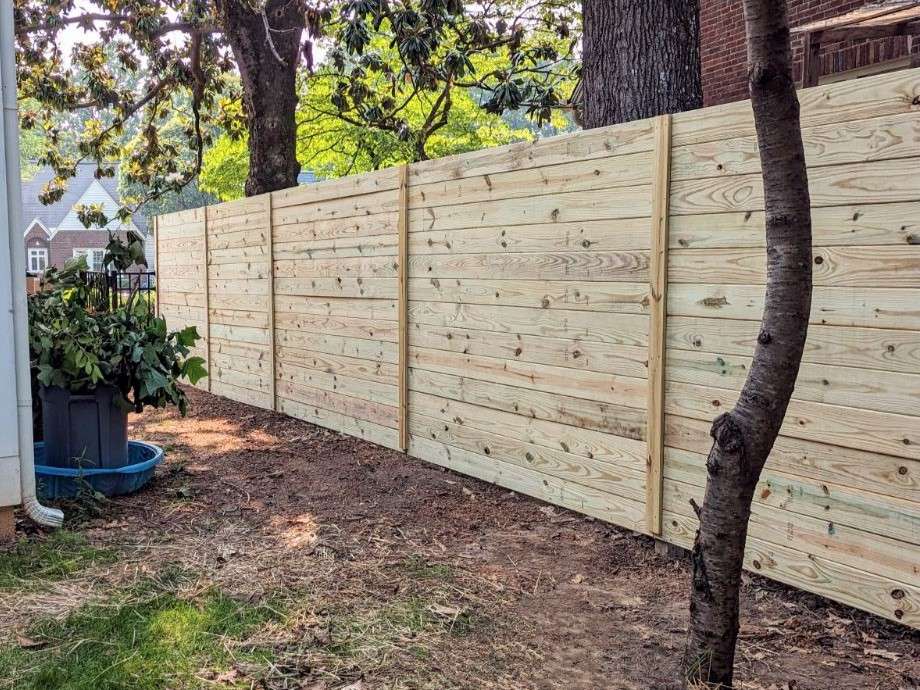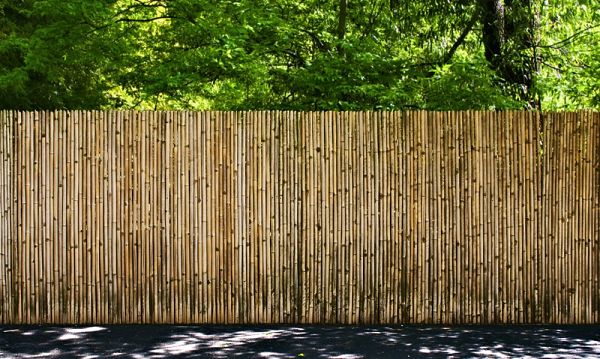Featured
While a tall fence may seem like the ideal alternative, the optimal elevation depends on several elements, including security requirements, local laws, and the materials utilized. Below, we'll lay out vital considerations to aid you select the ideal fencing elevation for optimal safety and security.
![]()
If you reside in a neighborhood controlled by a property owners' association (HOA), you need to additionally evaluate any kind of particular standards they have for fencing height, style, and materials. Following these laws guarantees you stay clear of lawful issues and preserve an excellent relationship with your next-door neighbors.
Taller fences are harder to scale and can considerably lower the possibility of burglaries. Including features like pointed tops, barbed wire, or perhaps electrical fence can better raise the barrier's security. A fencing that reaches 8 feet or greater is commonly efficient at stopping most individuals from conveniently leaping over it.
![]()
Wood Fencings: While wooden fences give personal privacy, they can be easy to climb up, especially if there are no anti-climb attributes. For optimal protection, take into consideration a wood fencing that's 6 to 8 feet tall with sharp tops or trellis extensions that make it harder to scale. Chain-Link Fences: Chain-link fencings are often much more economical and resilient than wood, and they can be constructed to the needed elevation for safety and security. To enhance prevention, consider including barbed or razor cord on top. These features inhibit climbing and make the fencing a lot more tough to breach. Wrought Iron Fences: Wrought iron fencings are typically used for high-security purposes because of their strength and longevity. Their upright bars make it challenging to climb up, and they can be built to 6 to 8 feet high with extra spikes or attractive anti-climb attributes to more safeguard the border. Plastic Fencings: Plastic is an outstanding choice if you need a strong, exclusive fence, but like timber, vinyl fencings may need extra height or security attributes to deter climbing up. Choose a fence that is at least 6 feet high to make certain personal privacy and safety and security. Each product uses different benefits in terms of visual appeals, durability, and maintenance, so it's vital to consider your specific demands and preferences when choosing a fencing.
Anti-Climb Features: Setting up sharp or pointed tops, trellis extensions, or safety and security spikes on top of the fence makes it harder for any individual to scale the fencing. These attributes serve as a solid deterrent to prospective burglars. Barbed or Razor Cord: Adding barbed cable or razor cable at the top of your fence raises safety substantially. This is commonly used in high-security locations, such as commercial residential properties, however can likewise be an excellent option for houses in risky locations. Electric Fencing: For high-level safety and security, you might intend to consider including an electrical fence to your home. Electric fence, when mounted correctly, can create a solid deterrent while staying relatively discreet. It delivers a mild shock to any person that attempts to climb the fencing or touch. Combining elevation with these added functions ensures that your fence provides the highest degree of safety and security.
Balancing the requirement for privacy and protection while maintaining the aesthetic charm of your residential property can assist you choose the right elevation and material for your fence. Ensure that your fence enhances the general design of your home and doesn't adversely impact the curb charm.
![]()
By meticulously taking into consideration all these aspects, you can produce a secure, exclusive, and attractive boundary around your residential property that provides both tranquility of mind and security.

- Understand Local Laws and Zoning Rules. The initial action in choosing your fencing height is to acquaint yourself with regional laws. Generally, front yard fencings are restricted to 3 to 4 feet, while backyard fencings can be as high as 6 to 8 feet or more.
If you reside in a neighborhood controlled by a property owners' association (HOA), you need to additionally evaluate any kind of particular standards they have for fencing height, style, and materials. Following these laws guarantees you stay clear of lawful issues and preserve an excellent relationship with your next-door neighbors.
- Determine the Desired Degree of Security. The degree of safety you need is a major factor in identifying the optimal fencing height. A fencing elevation of 6 to 8 feet is normally suggested for optimal safety.
Taller fences are harder to scale and can considerably lower the possibility of burglaries. Including features like pointed tops, barbed wire, or perhaps electrical fence can better raise the barrier's security. A fencing that reaches 8 feet or greater is commonly efficient at stopping most individuals from conveniently leaping over it.
- Pick the Right Material for Your Fence. The product of your fence plays a crucial role in its capacity to offer security. While taller fences are better for security, the sort of product you utilize can enhance or hinder the effectiveness of the elevation. Here are some prominent fence materials for security:

Wood Fencings: While wooden fences give personal privacy, they can be easy to climb up, especially if there are no anti-climb attributes. For optimal protection, take into consideration a wood fencing that's 6 to 8 feet tall with sharp tops or trellis extensions that make it harder to scale. Chain-Link Fences: Chain-link fencings are often much more economical and resilient than wood, and they can be constructed to the needed elevation for safety and security. To enhance prevention, consider including barbed or razor cord on top. These features inhibit climbing and make the fencing a lot more tough to breach. Wrought Iron Fences: Wrought iron fencings are typically used for high-security purposes because of their strength and longevity. Their upright bars make it challenging to climb up, and they can be built to 6 to 8 feet high with extra spikes or attractive anti-climb attributes to more safeguard the border. Plastic Fencings: Plastic is an outstanding choice if you need a strong, exclusive fence, but like timber, vinyl fencings may need extra height or security attributes to deter climbing up. Choose a fence that is at least 6 feet high to make certain personal privacy and safety and security. Each product uses different benefits in terms of visual appeals, durability, and maintenance, so it's vital to consider your specific demands and preferences when choosing a fencing.
- Include Protection Functions for Additional Defense. While height is essential, including additional safety and security functions to your fencing can increase its effectiveness. Think about the adhering to additions:
Anti-Climb Features: Setting up sharp or pointed tops, trellis extensions, or safety and security spikes on top of the fence makes it harder for any individual to scale the fencing. These attributes serve as a solid deterrent to prospective burglars. Barbed or Razor Cord: Adding barbed cable or razor cable at the top of your fence raises safety substantially. This is commonly used in high-security locations, such as commercial residential properties, however can likewise be an excellent option for houses in risky locations. Electric Fencing: For high-level safety and security, you might intend to consider including an electrical fence to your home. Electric fence, when mounted correctly, can create a solid deterrent while staying relatively discreet. It delivers a mild shock to any person that attempts to climb the fencing or touch. Combining elevation with these added functions ensures that your fence provides the highest degree of safety and security.
- Consider Personal Privacy and Aesthetic Preferences. While safety should be your primary problem, it's likewise crucial to consider the aesthetic allure of your fencing. High fencings may provide safety and security, but they can occasionally show up enforcing or hostile. If privacy is a concern, a solid timber or vinyl fencing can use both protection and seclusion, while a wrought iron fencing uses protection with an open view.
Balancing the requirement for privacy and protection while maintaining the aesthetic charm of your residential property can assist you choose the right elevation and material for your fence. Ensure that your fence enhances the general design of your home and doesn't adversely impact the curb charm.

- Final Thoughts on Fence Height and Safety. Selecting the right fence elevation for optimum safety involves balancing numerous variables, consisting of regional regulations, the degree of safety and security required, the product of the fence, and extra security features. In basic, a fence height of 6 to 8 feet is excellent for the majority of property homes, with taller fencings supplying an included layer of protection for risky locations.
By meticulously taking into consideration all these aspects, you can produce a secure, exclusive, and attractive boundary around your residential property that provides both tranquility of mind and security.
Latest Posts
Teen Freedom Account: A Smart Start to Financial Self-reliance
Published Apr 21, 25
1 min read
NAPA AutoCare Certified: Trust Montclare Auto Repair for Quality Service
Published Apr 20, 25
2 min read
Exploring Quality with A-Abel Roof's Gallery
Published Apr 20, 25
1 min read